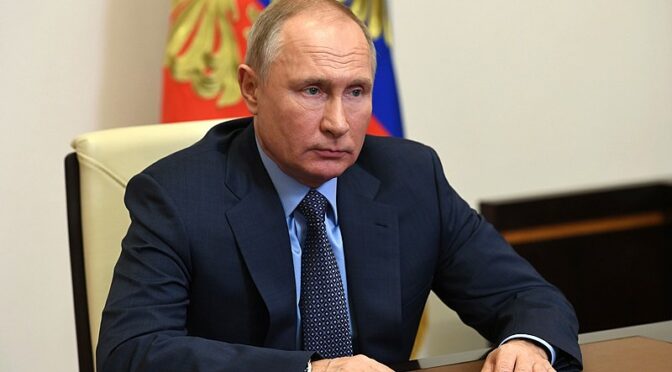Article published in The Daily Telegraph, 12 September 2022. © Richard Kemp
For the first time in this war Russia is on the defensive. A lightning Ukrainian counteroffensive in the east over the last few days has created a turning point from which Putin will struggle to recover. Since their withdrawal from Kyiv in March Russian forces concentrated offensive action in Donbas in eastern Ukraine, making slow but substantial progress and inflicting severe casualties on the Ukrainian defenders. That changed last month when Kyiv began an offensive against Kherson in the south, threatening Crimea — Russia’s most vital possession in Ukraine. Putin had to hold it at all costs and sent up to 30,000 troops to reinforce the Kherson front.
Those troops came from the east, leaving a paper-thin defence, made up largely of poorly trained, equipped and motivated local militias, with many forced conscripts. Kyiv seized the opportunity to exploit this weakness and has now re-taken most of the Kharkiv district, including the strategically vital town of Izyum, as well as parts of Donetsk, so far reportedly capturing some 3,000 square kilometres of territory against little Russian resistance. Russia’s troops were so badly prepared they had not constructed proper fortifications and were forced to abandon vast quantities of combat equipment and supplies, most of which are being re-purposed by Ukraine to strengthen its own units.
As Ukrainian forces continue attacking in the Kherson area, from the east they are now also poised to drive south, potentially threatening both Donbas and Crimea. On the ground Putin has few options and all of them are bad. Although Ukraine will face stiffer resistance in Donbas and the south, the kind of defeat Russia has now suffered at Kharkiv often leads to a domino effect as morale is undermined and panic sets in, including among commanders.
How has Putin’s army become so stretched over so long a battlefront? He greatly under-estimated the Ukrainian ability to resist even after months of fighting and hubristically failed to order a general mobilisation, expecting to secure victory with relatively few Russian troops, bolstered by local militias. Despite evidence to the contrary, including humiliation at Kyiv, he continued to over-estimate his own forces’ capabilities.
The same self-imposed predicament that led him to invade in the first place has endured as the campaign unfolded — corrupt subordinates who undermined military and intelligence capabilities by syphoning resources to line their pockets compensating for their kleptocracy by telling him what he wanted to hear about the likelihood of military success.
The war is not over by any means, and, like a wounded dog, Putin may resort to even more dangerous means than he has employed so far, including mass bombing and missile attacks against Ukrainian civilians and infrastructure. We have already seen a hint of this in strikes against energy installations in northeast Ukraine in recent days, including the country’s second biggest power plant.
Putin’s problems are not confined to the battlefield. Success has many fathers, and further victories by Ukraine could galvanise flagging European support brought about by the energy crisis as well as an absence of visible evidence that the billions ploughed into the country were making a difference.
Perhaps even more significantly, Russia’s defeat around Kharkiv is beginning to trigger rumblings of discontent in Moscow and, if Ukraine can consolidate and develop its gains, there is the real prospect that Putin’s folly in this war could lead to his downfall. There will undoubtedly be more pain ahead, but those who advocated for Zelensky to make an accommodation with Moscow and have been searching for an off-ramp for Putin might have to reconsider.
Image: Wikimedia Commons

